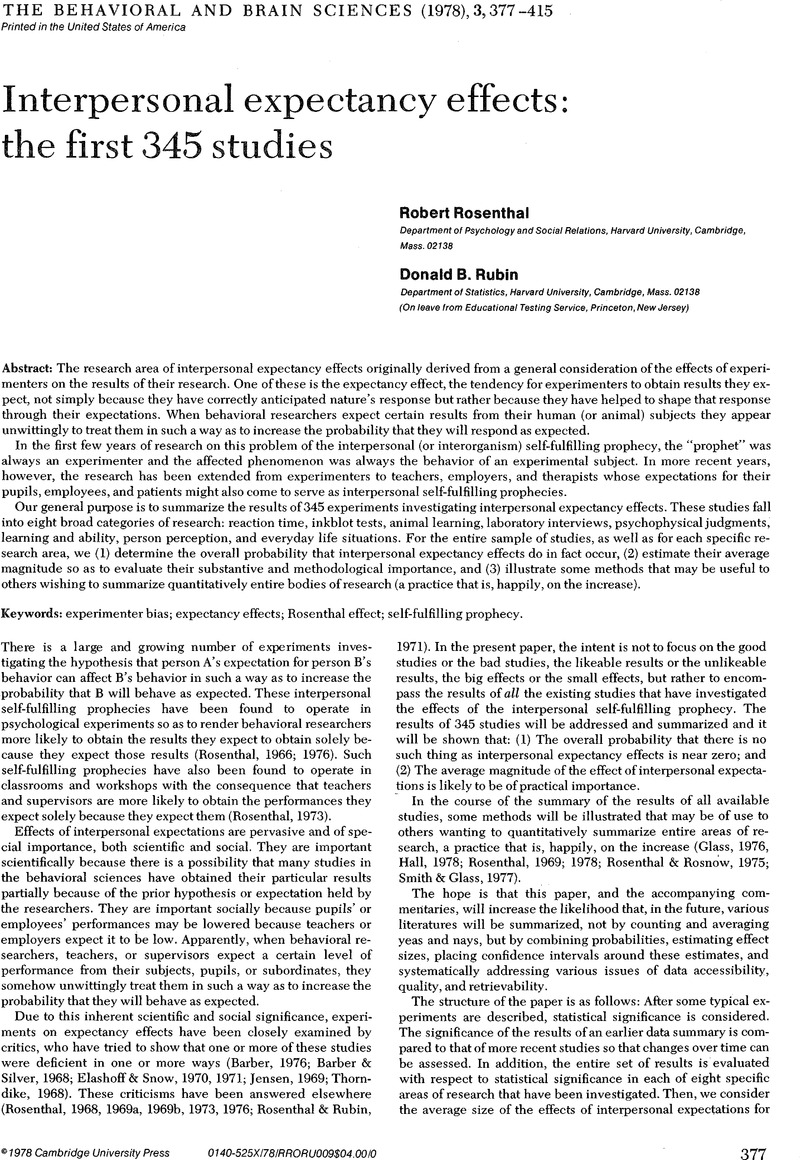No CrossRef data available.
Article contents
Quantifying the interpersonal expectancy effect: on the place of statistical significance in a program of research
Published online by Cambridge University Press: 04 February 2010
Abstract
An abstract is not available for this content so a preview has been provided. Please use the Get access link above for information on how to access this content.

- Type
- Open Peer Commentary
- Information
- Copyright
- Copyright © Cambridge University Press 1978
References
REFERENCES
Bakan, D.The test of significance in psychological research. Psychological Bulletin. 66:423–437, 1966.CrossRefGoogle ScholarPubMed
Braun, C.Teacher expectation: Sociopsychological dynamics. Review of Educational Research. 46:185–213, 1976.CrossRefGoogle Scholar
Brophy, J. E. & Good, T. L.Teachers' communication of differential expectations for children's classroom performance: Some behavioral data. Journal of Educational Psychology. 61:365–374, 1970.CrossRefGoogle Scholar
Campbell, D. T. Prospective: artifact and control. In: Rosenthal, R. and Rosnow, R. L. (eds.), Artifact in behavioral research. Academic Press, New York, 1969.Google Scholar
Dusek, J. B.Do teachers bias children–s learning? Review of Educational Research. 45:661–684, 1975.CrossRefGoogle Scholar
Kruglanski, A. W. The human subject in the psychology experiment: Fact and artifact. In: Berkowitz, L. (ed.), Advances in Experimental Social Psychology. 8:101–147, 1975.Google Scholar
Kruglanski, A. W. & Kroy, M.Outcome validity in experimental research: A re-conceptualization. Representative Research in Social Psychology. 7:166–178, 1976.Google Scholar




